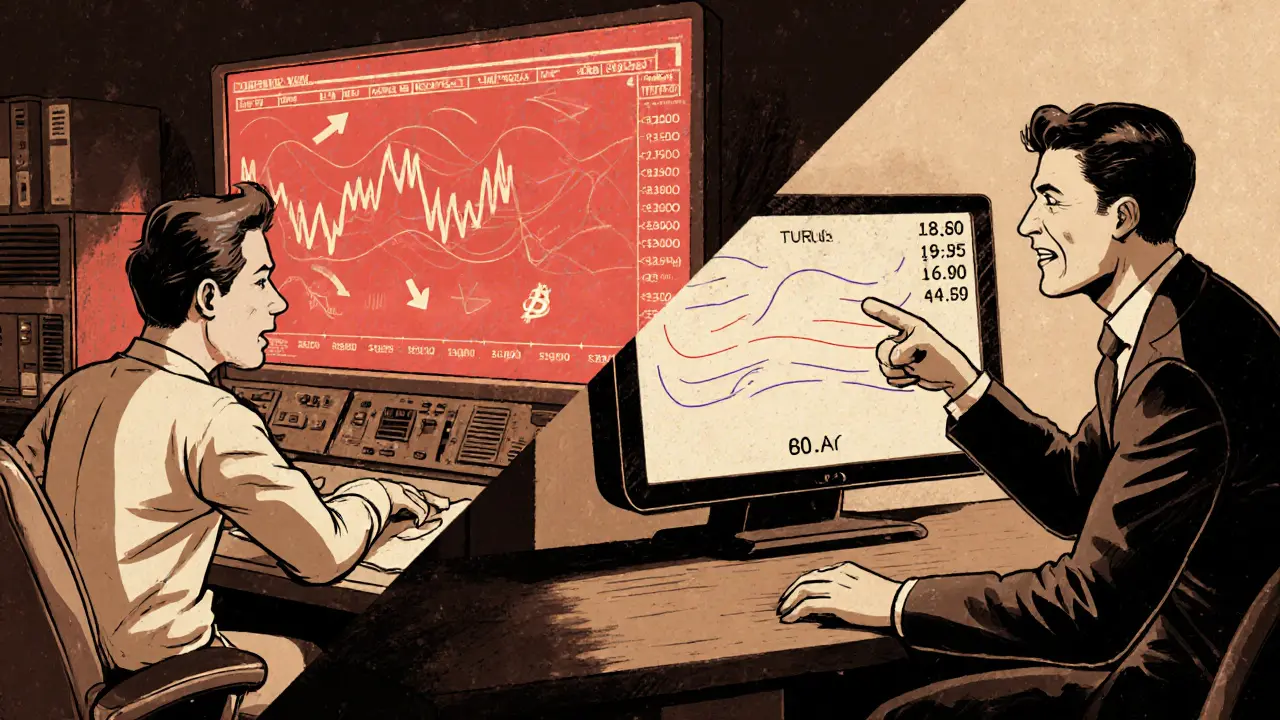
Curve Finance Swap Calculator
Swap Analysis Results
Enter values and click Calculate to see details
If you’ve ever tried swapping USDC for DAI on a generic DEX and watched the price drift a few basis points, you know the pain of slippage. Curve review is all about whether this specialized Ethereum‑based exchange actually fixes that problem while keeping fees low and yields attractive. Below we break down every angle a trader or liquidity provider cares about, from the math behind the pools to the latest cross‑chain upgrades.
What is Curve Finance?
Curve Finance is a decentralized exchange (DEX) built on Ethereum that focuses exclusively on stablecoin and similarly‑priced asset swaps. Launched in 2020, the protocol uses a custom automated market maker (AMM) designed to minimize slippage and trading fees when assets share a near‑identical peg.
Instead of a one‑size‑fits‑all model like Uniswap, Curve’s pools are optimized for assets such as DAI, USDC, USDT, and wrapped Bitcoin variants. The platform’s native governance token, CRV, lets holders vote on fee structures, new pool parameters, and protocol upgrades.
How Curve’s AMM Works
Traditional AMMs follow a simple x·y=k curve, which works well for volatile pairs but creates high slippage for stable assets. Curve replaces that with a “bonding curve” that flattens around the peg, allowing huge trade volumes with barely any price impact. In 2025 the protocol introduced “adaptive curve technology,” which automatically tweaks the curve shape based on real‑time volatility and volume, keeping the slippage curve tight even during market spikes.
Each pool aggregates liquidity from multiple providers, then allocates fees proportionally. Because the assets move in lockstep, the impermanent loss risk is dramatically lower-often quoted as under 0.5% for a full‑year holding, compared to double‑digit losses on generic AMMs.
Fees, Slippage, and Gas Costs
Curve charges a base fee of 0.04% on stablecoin swaps, plus a variable protocol fee that can be adjusted by the DAO (currently set at 0.01%). Those numbers are a fraction of the 0.30%‑0.35% you’d see on most centralized exchanges and far below Uniswap’s 0.30% default.
Gas is still a consideration on Ethereum’s L1, especially during peak congestion. To mitigate that, Curve expanded to Arbitrum, Optimism, Polygon, Fantom, and Avalanche. Swapping the same stablecoin pair on Arbitrum typically costs under $0.10 in gas, versus $2‑$5 on Ethereum L1.
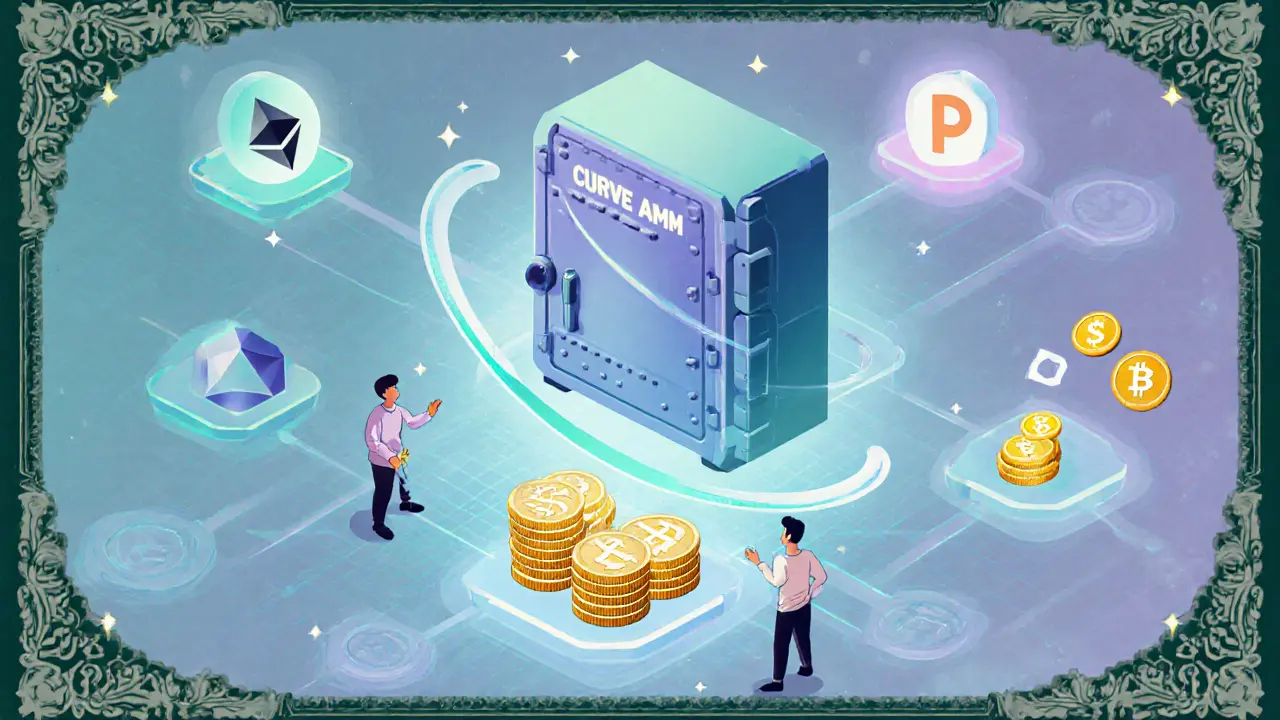
Yield Farming and CRV Incentives
Liquidity providers (LPs) earn two streams of income: a share of the trading fees and CRV token rewards. The CRV rewards are distributed through “gauges” that the DAO can boost with veCRV (vote‑escrowed CRV) stakes. In practice, a well‑balanced USDC/DAI pool yielded an annualized return of 12‑15% in 2024‑2025, with half of that coming from CRV incentives.
Since mid‑2024 Curve also launched its own over‑collateralized stablecoin, crvUSD, which can be used to pay fees or supplied into pools for extra yield. By April 2025 crvUSD’s circulating supply topped $120million, and many LPs now earn a small crvUSD yield on top of the base fee.
Cross‑Chain Reach and Integration
Beyond Ethereum, Curve runs native contracts on five additional chains, each synced via LayerZero and Wormhole bridges. This multi‑chain setup not only cuts gas but also opens arbitrage opportunities across networks. For example, a trader could swap USDT for DAI on Polygon (low gas) and then move the DAI to an Ethereum pool where the fee reward is temporarily higher.
Curve’s ecosystem is also deeply integrated with major DeFi protocols: Aave, Compound, Yearn, and the upcoming lending UI slated for release at the end of 2025. These integrations let you use LP tokens as collateral, boost yields with Yearn vault strategies, or instantly lend earned CRV on Aave.
Pros and Cons
- Pros
- Ultra‑low slippage for stablecoins (often <0.01% on $1M trades).
- Low trading fees (0.04%+0.01% protocol fee).
- Strong LP incentives via CRV and crvUSD.
- Multi‑chain support reduces gas costs.
- Robust governance model with active community.
- Cons
- Interface can feel technical for first‑time users.
- Limited to stablecoins and wrapped assets-no direct volatile pair swaps.
- Smart‑contract risk remains, though audits are frequent.
- CRV price volatility can affect perceived LP returns.
Curve vs. Other DEXs
| Feature | Curve Finance | Uniswap V3 | SushiSwap |
|---|---|---|---|
| Primary focus | Stablecoins & similar‑price assets | All token pairs | All token pairs |
| Base fee (stable swaps) | 0.04%+0.01% protocol | 0.30% | 0.25% |
| Typical slippage (1M USDC→DAI) | 0.01% | 0.12% | 0.09% |
| LP reward token | CRV (veCRV boost) | UNI | SUSHI |
| Cross‑chain options | Ethereum, Arbitrum, Optimism, Polygon, Fantom, Avalanche | Ethereum, Optimism, Arbitrum (limited) | Ethereum, BSC, Polygon |
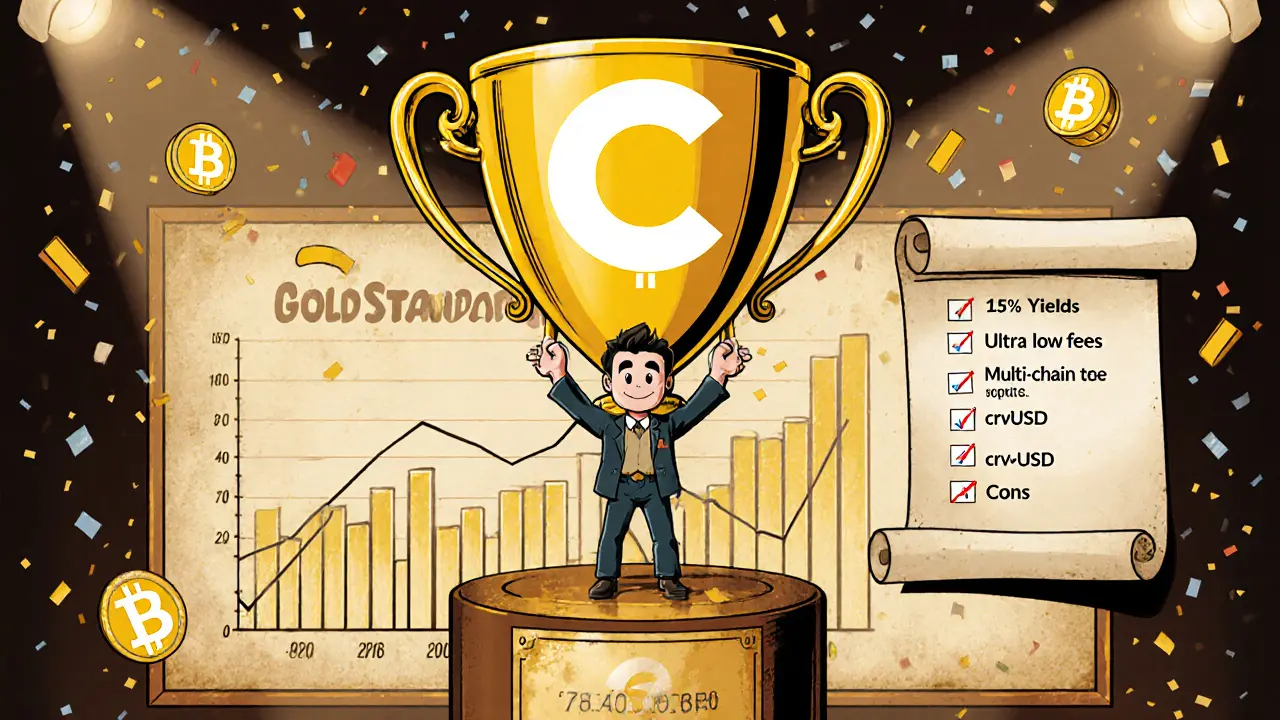
Getting Started: Step‑by‑Step
- Install a Web3 wallet (MetaMask, Trust Wallet, or Rainbow) and fund it with ETH for gas.
- Navigate to curve.fi and click “Connect Wallet”.
- Select the pool you want to trade - for example, the “USDC/DAI” pool on Ethereum.
- Enter the amount, confirm the swap, and approve the token allowance when prompted.
- If you wish to provide liquidity, click “Deposit” in the same pool, stake your LP tokens, and optionally lock CRV for veCRV boost.
- Monitor your rewards on the “Earn” tab; you can claim fees and CRV weekly.
For lower gas, repeat the same steps on Arbitrum or Optimism; the UI is identical, only the network selector changes.
Security, Risks, and Best Practices
Curve’s codebase undergoes regular audits from firms like Quantstamp and Trail of Bits. Nevertheless, smart‑contract risk can’t be eliminated. Here’s a quick safety checklist:
- Use a hardware wallet for large positions.
- Start with a small amount to verify UI and transaction flow.
- Keep an eye on the DAO’s recent proposals-fee changes or gauge resets can affect yields.
- Beware of “flash loan” attacks that temporarily inflate pool balances; Curve’s adaptive curves mitigate but don’t fully block them.
- Track CRV price volatility; a sudden dip can reduce the effective APY for LPs.
Overall, the platform’s long‑standing presence and active community make it one of the safer niches in DeFi, especially for stablecoin exposure.
Final Verdict
For anyone whose primary goal is swapping or earning on stablecoins, Curve Finance remains the gold standard in 2025. Its ultra‑low fees, minimal slippage, and attractive LP rewards outweigh the learning curve and the lack of volatile pair trading. If you’re comfortable handling a Web3 wallet and can keep an eye on governance updates, Curve should sit at the top of your DeFi toolbox.
Frequently Asked Questions
Is Curve safe to use for beginners?
Curve’s contracts are heavily audited, but the UI can be intimidating at first. New users should start with a tiny trade on the Ethereum mainnet or on a cheap layer‑2 like Arbitrum, then gradually explore liquidity provision once they’re comfortable.
How do I earn CRV rewards?
After depositing assets into a Curve pool, you receive LP tokens. Stake those tokens in the pool’s gauge, then claim CRV rewards weekly. For higher APY you can lock CRV as veCRV, which boosts gauge weight.
Can I trade volatile pairs on Curve?
No. Curve specializes in assets that share a peg. For ETH/BTC or other volatile swaps you’ll need a general‑purpose DEX like Uniswap or SushiSwap.
What gas should I expect on Ethereum vs. layer‑2?
On Ethereum L1 a $200‑$400 swap can cost $2‑$5 in gas. On Arbitrum or Optimism the same trade typically stays under $0.10, while Polygon often lands below $0.02.
What is crvUSD and why should I care?
crvUSD is Curve’s over‑collateralized stablecoin launched in 2024. It can be used to pay fees at a discount, supplied to earn yield, or added to liquidity pools for an extra reward layer.
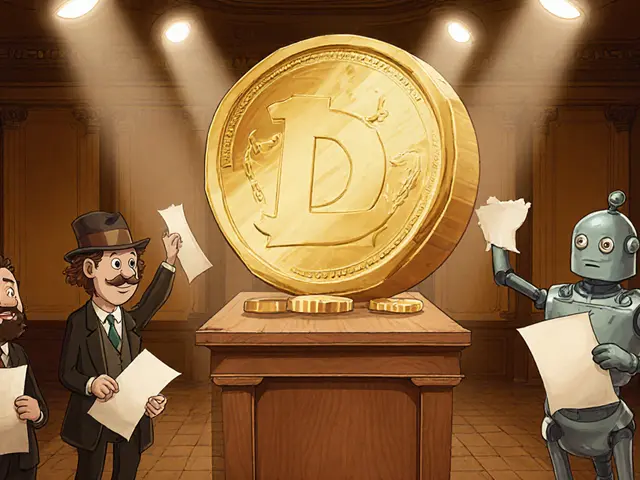
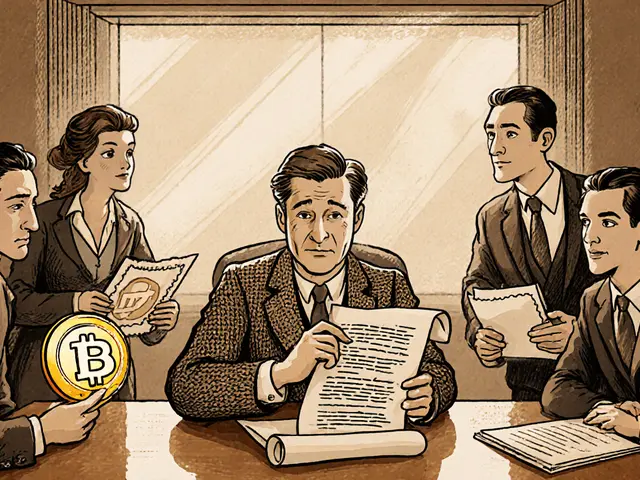



Comments (15)
Ali Korkor
Curve is the real deal for stable swaps. No more watching your USDC turn into USDT with 0.8% slippage. Been using it for over a year and the gas savings on Arbitrum alone make it worth it.
Serena Dean
Just added my first liquidity to the crvUSD pool last week. Got 14.2% APY with the boost. Honestly didn't expect it to be this smooth. If you're holding stablecoins anyway, why not earn something?
Chloe Jobson
Adaptive curve tech is the unsung hero here. The way it dynamically adjusts the k parameter based on volume spikes is pure DeFi engineering. No other AMM does this at scale.
Patrick De Leon
Curve is fine I guess but why are we still building on Ethereum? The network is a relic. If you're serious about DeFi you should be on Solana or Sui. This is just rehashing old tech with new labels.
James Young
You guys are missing the point. CRV is a garbage token. The entire incentive structure is a pyramid scheme disguised as yield farming. Anyone who’s still staking veCRV is just feeding the machine.
Dick Lane
I used to think Curve was overhyped until I tried swapping USDT for DAI during the March volatility. Slippage was under 0.02%. That's not magic, that's math. And it works.
Andrew Morgan
Just got back from a trip to Lisbon and saw three different crypto cafes using Curve for their daily stablecoin swaps. People don't care about the tech. They care that it just works. And it does.
John Murphy
Anyone else notice how the crvUSD yield dropped a bit after the big deposit from the treasury? It’s not just about the APY numbers. It’s about sustainability. I’ve been watching the gauge weights closely this month.
Akinyemi Akindele Winner
Curve? More like Curve-ception. They got pools inside pools, tokens inside tokens, bridges inside bridges. It’s not DeFi anymore, it’s a Russian nesting doll made of gas fees and hype. I love it.
madhu belavadi
I put all my savings into Curve last year and now I’m broke. The yield looked good but the rug pull was real. CRV crashed and my LP tokens are worth less than my coffee.
Zach Crandall
While I appreciate the technical elegance of Curve’s bonding curve, one must consider the broader macroeconomic implications of decentralized stablecoin arbitrage in a world increasingly regulated by the IMF and the Federal Reserve. The protocol’s architecture, though mathematically sound, may inadvertently facilitate capital flight from sovereign monetary systems.
Sean Huang
Curve is a front for the Fed’s crypto experiment. Did you know the crvUSD issuance is secretly tied to the USDT reserves held by Tether? The DAO votes are rigged. The bridges? All monitored. They’re building a digital dollar backbone. Wake up.
Norman Woo
curve is good but why do they keep adding more chains? now its on like 7 blockchains and i cant even remember which one i used last week. also the website loads slow now. maybe too much hype?
Michael Folorunsho
If you’re still using Curve, you’re part of the problem. Real DeFi traders use DEX Screener and trade across 12 chains with MEV bots. Curve is for retail who don’t understand impermanent loss. You’re not a liquidity provider-you’re a yield chaser.
MANGESH NEEL
Everyone’s acting like Curve is the second coming. Meanwhile, the same people who praise it are the ones who dumped their ETH for USDC during the bank collapse and now cry about slippage. You didn’t find a solution-you just ran from your own panic. Curve didn’t save you. You saved yourself by being scared.